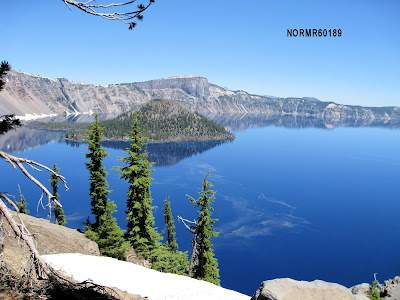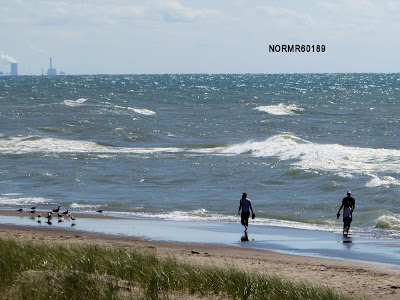 |
| Making coffee in the morning in the "Solar powered" Class B Must turn off the hot water heater before using the burner! Outside ambient: 20F, Inside: chilly! |
![]()
Realistic expectations
We trek and we have spent up to 100+ continuous days in our Roadtrek. But first, we rented a "100% electric" solar powered Sprinter coach and took it to the National Parks in Utah. It was mid-October 2013. Nighttime temperatures were about 20F. It was a good test of how well a solar powered, electric coach would perform. That was our purpose in choosing it, and I wanted to see how the BlueTec engine performed, etc.
From a comfort perspective, it was not ideal, and G had to ask "How is it that one would spend $100K to buy this?" Adequate if the ambient temperature was in the range 50F to 80F and if one wasn't parked in the full sun during the daylight hours. Otherwise uncomfortable. The Sprinter had sufficient batteries and solar, and a large inverter, but it did have power limitations. For example, we couldn't use the electric cooktop and simultaneously make hot water for bathing or cleaning. For comfort heat it had a 1500 W electric heater, which was not adequate at below freezing, nighttime temperatures. There was no propane. It was a Mercedes camping experience as we slept in sleeping bags.
However, that experience allowed us to make a more realistic list of "must haves" and after reviewing these and discussing the Sprinter and our experience, we purchased a Roadtrek 210P which uses multiple fuels for coach amenities. After the Roadtrek financial bankruptcy, the 210P is no longer made, which is a shame.
I'm not going to repeat my earlier posts, in particular the one about our experience and decision to purchase the 210P. I do have earlier posts on solar, batteries, etc.
Solar Power and Batteries
We purchased a new Roadtrek a bit sooner than would have been ideal at the time. We were both working and had very limited time for trekking. On the other hand, the price in December 2013 was really good, with a steep discount. So, we purchased it. Because we live in a HOA and our garage cannot accommodate the Roadtrek we had to store it, and the largest issue was keeping the chassis and coach batteries fully charged. I did run the generator monthly. The 210P did not have solar.
To keep the chassis battery fully charged, I purchased a 50W solar panel and controller. That's documented in a earlier post. I selected a de-sulfating controller. That was in Spring of 2014.
I mounted the solar controller adjacent to the coach batteries, and I decided I wanted a "portable" panel, because when it is hot it is preferable to park in the shade. My approach allowed us to charge the batteries during the day while we were comfy. The cable connecting the solar panel to the controller is about 20 ft long and is coiled and placed under the passenger seat when we are in movement.
The Coach Solar
The 24" x 24" 50 watt panel is stored behind the drivers seat when we are travelling. Why only 50 watts?
I had evaluated our DC electrical power needs. Our Roadtrek 210P has a 2.8kW Onan gasoline generator. It also had multiple energy sources. For example, propane is the source for the furnace, hot water and a range top, as well as the third source for the 3-way refrigerator. All of the controls are 12VDC.
We have no interest in living "off the grid" for weeks while running the refrigerator and Air Conditioning or space heat using 3000 watts of batteries and solar panels. In fact, our 210P simply doesn't have enough roof space for all of those solar panels. 200W would be pushing the maximum roof space available. Our interest is charging the coach and chassis batteries, reducing but not replacing the amount of grid electricity we need and so on. This is because of practical considerations. Those considerations include roof area available or size of portable panels, battery considerations and cost.
What can we get if we maximize the roof panel? For example, 100W solar panels can produce about 5.6A. Depending on the orientation of the panel, the intensity of sunlight and the hours of direct sunlight received in a day, a 100W panel can generate 20- to 30-amp hours (Ah) daily. In fact, the amount of energy may be only half of this because of clouds, panel orientation and hours of daylight. 200W could provide a maximum of about 60-amp hours each day.
To charge the coach batteries using 120VAC and the Triplite charger-inverter requires anywhere from about 3.6A to 9.3A at 120VAC. To fully charge 50% depleted batteries can take 12 hours. At the lower charging rate using the Triplite 120VAC inverter-charger, 3.6A is a minimum used, or about 430 watts. I've measured the AC at the pole with everything off in the coach except charging via the Triplite. At a typical seasonal campground where we pay $0.14 per kWh; that's $1.45 per day to keep the coach batteries fully charged.
If the batteries are at 50% the AC required for charging can increase to 9.3A (1,116 Watts). The 50 watt panel can't do that. It can provide about 4.2A at 12 VDC.
The 50 watt solar panel is sufficient for my needs to keep the coach batteries fully charged under low load. If we need more charging current I can run the Onan generator, or run the vehicle. Running the vehicle will charge the chassis battery and, if the battery separator is closed the coach batteries will also charge.
If we need more 120VAC than the 750 watt inverter and batteries can provide while off the grid, we run the Onan generator. The generator uses 0.3 gallons of gasoline at half load. That's acceptable and in this manner we can recharge the coach batteries and run appliances. The Onan can provide sufficient AC for the heat pump/air conditioner.
Why a Portable (detached) solar panel?
I preferred a portable solar panel because we can park the Roadtrek in the shade and put the solar in the sun, and I can orient the panel for maximum DC energy. The de-sulfating solar controller I purchased is rated for 180W maximum panels. I can always upgrade to more solar. However, if I really want more solar, I'll probably mount a flexible panel on the roof and carry another 100W portable panel. In that way I could get up to 200W if parked in the sun or, at a minimum 100W if parked in the shade with the portable panel in the sun.
I've written about batteries in earlier posts. I don't like the low temperature charging limitations of Lithium-Ion batteries. Combined with the high cost, I don't see an overwhelming advantage for us. In my earlier posts I do go into greater detail about this.
 |
| 50 Watt panel in full sun |
 |
| Charging at MI campground |
 |
| 50 Watt behind the windshield The glass does reduce the efficiency, however, if facing the sun for half of the day the panel does keep the coach batteries fully charged. |
 |
| At the AZ "lily pad" the Roadtrek is under the roof. I place the portable solar panel on the roof. |
 |
| The Roadtrek is in the shade, while the solar panel is directly above, on the the roof, in full sun. |
Charging the Chassis Battery
 |
| 30 Watt solar panel |
 |
| Chassis battery charging voltage on Solar, 13.1 VDC |
(c) 2021 Roadtrek210.blogspot.com.









































